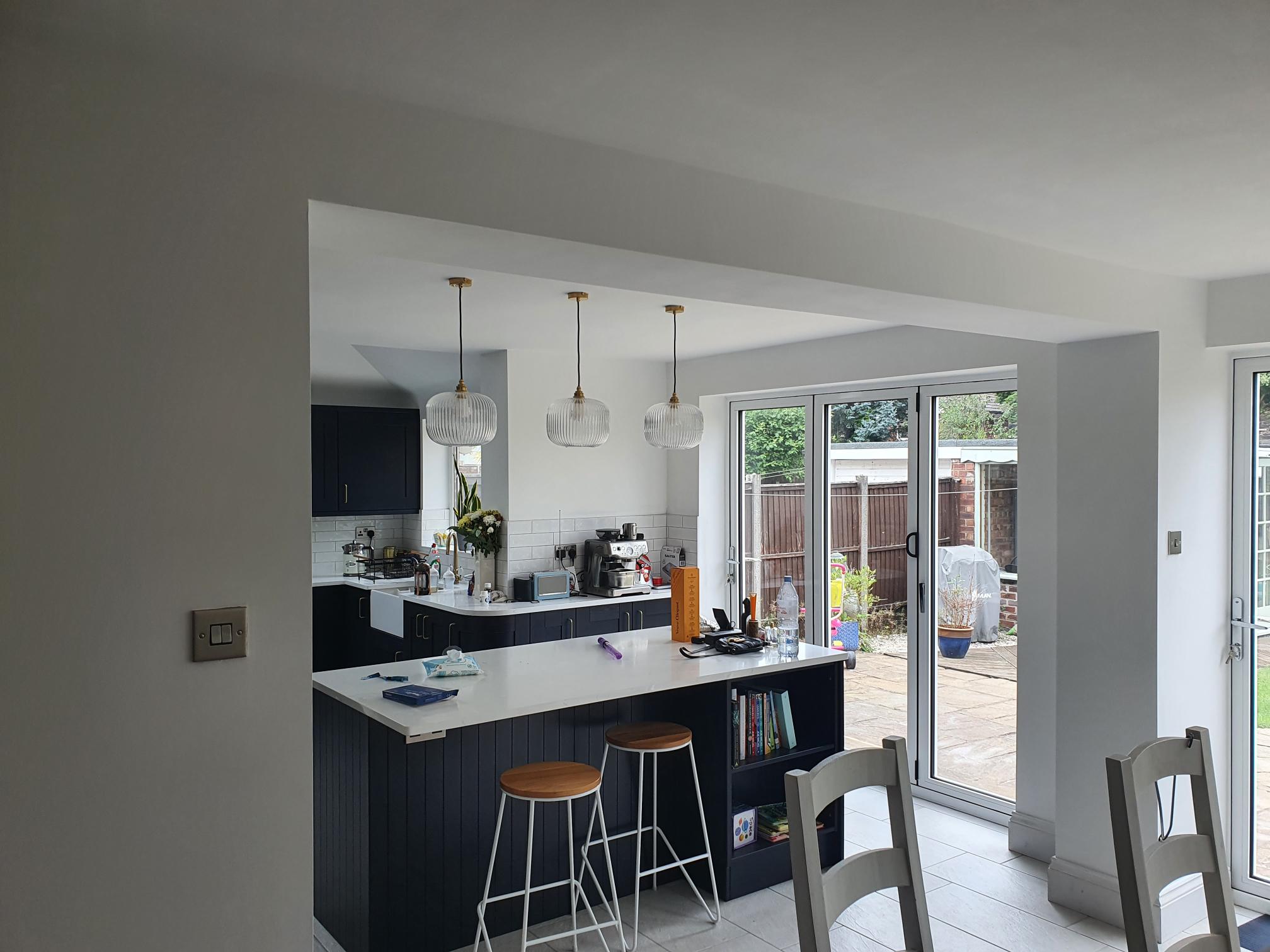Hi,
I've recently had some work done on my house to make an open plan kitchen/diner space. The house is a 1960s dormer bungalow that has a two storey extension completed at the back years ago. I've recently had an internal load bearing wall knocked through with a steel beam installed to support the upstairs rooms. We also had a wall taken down and stud wall installed to make a built in fridge- freezer/larder pull out unit. This wall was part of of the old external wall that is no longer supporting following the previous extension. We had structural engineer perform the calculations and hired a reputable local builder who was done work work others that I know.
Since the work has been completed I've noticed a a number of hairline cracks appearing. In isolation I wouldn't really be concerned about these as they are all very thin (less than 1mm) but as there are quite a few appearing in various rooms I'm a little concerned if this is something more structural related rather than minor movement following the works.
Some pictures.
Picture of the span
Crack across ceiling which I believe is where boards joined old ceiling and new false ceiling we had to make a flat ceilings
Crack in hallway ceiling
Crack above door frame upstairs
This crack is above the steel beam and appeared a few days after the install. The builder said it was likely due to slight movement when the acros went in or out. He filled it in but you can see the line again now. The fact this is Diagonal is abit more concerning but still only a thin crack.
Also couple of pics of the wall taken down and steel in place
There are a number of other similar cracks which is why I thought I would post to get input. Do you think this is worth getting the structural engineer out or is it minor enough to consider related to abit of moment which will settle and can be repaired with proper filler, raking out the cracks a little etc.
Thanks in advance. Let me know if you need anymore info.
I've recently had some work done on my house to make an open plan kitchen/diner space. The house is a 1960s dormer bungalow that has a two storey extension completed at the back years ago. I've recently had an internal load bearing wall knocked through with a steel beam installed to support the upstairs rooms. We also had a wall taken down and stud wall installed to make a built in fridge- freezer/larder pull out unit. This wall was part of of the old external wall that is no longer supporting following the previous extension. We had structural engineer perform the calculations and hired a reputable local builder who was done work work others that I know.
Since the work has been completed I've noticed a a number of hairline cracks appearing. In isolation I wouldn't really be concerned about these as they are all very thin (less than 1mm) but as there are quite a few appearing in various rooms I'm a little concerned if this is something more structural related rather than minor movement following the works.
Some pictures.
Picture of the span
Crack across ceiling which I believe is where boards joined old ceiling and new false ceiling we had to make a flat ceilings
Crack in hallway ceiling
Crack above door frame upstairs
This crack is above the steel beam and appeared a few days after the install. The builder said it was likely due to slight movement when the acros went in or out. He filled it in but you can see the line again now. The fact this is Diagonal is abit more concerning but still only a thin crack.
Also couple of pics of the wall taken down and steel in place
There are a number of other similar cracks which is why I thought I would post to get input. Do you think this is worth getting the structural engineer out or is it minor enough to consider related to abit of moment which will settle and can be repaired with proper filler, raking out the cracks a little etc.
Thanks in advance. Let me know if you need anymore info.
Last edited:








